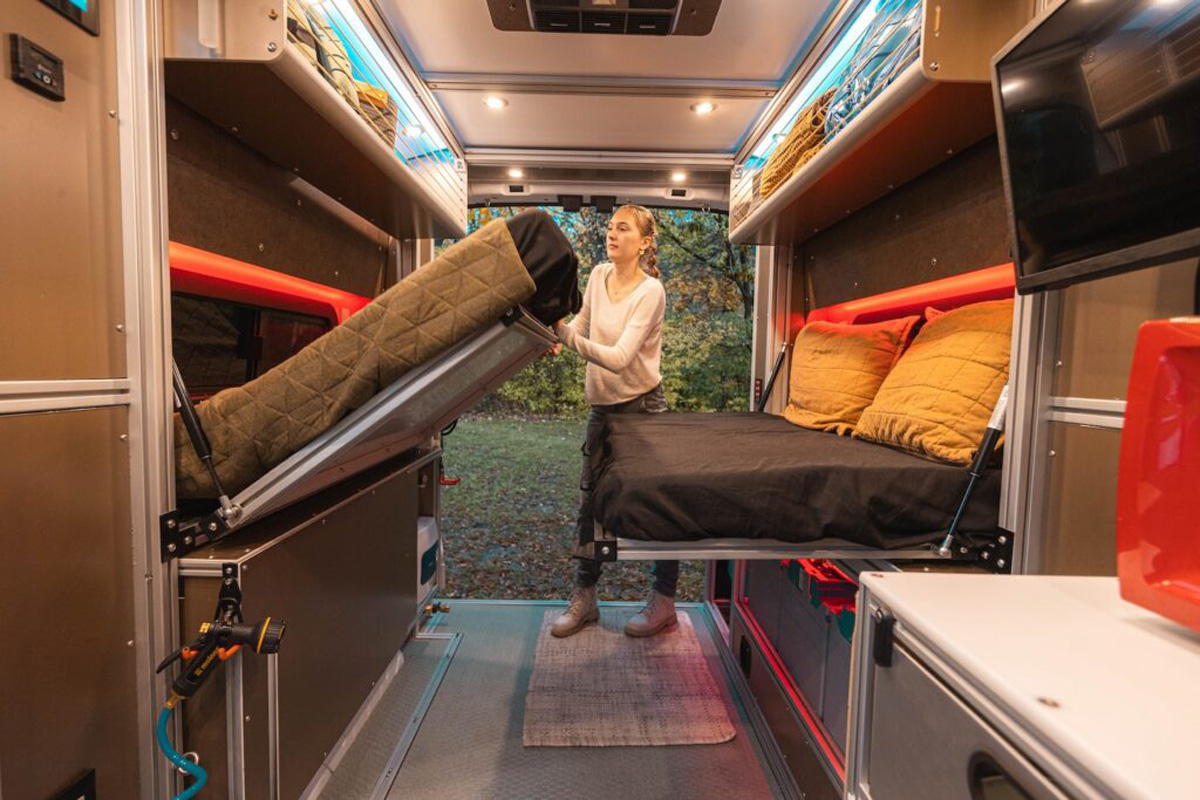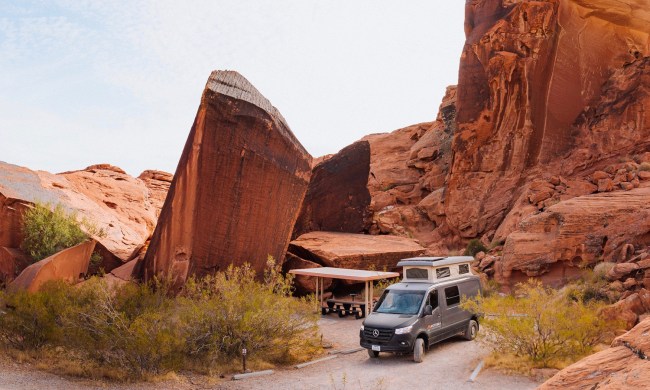
If you would love to go on road trips and experience the best national parks, there is no better way to do it and still feel comfortable like you’re at home than camping in an RV. Let’s be honest: You will enjoy sleeping on a cozy bed in an RV with an air conditioner more than in a moist and chilly tent. It’s also easier to prepare your meals in an RV because of the refrigerator, and you don’t have to worry about packing and unpacking your camping bags every night or morning.
However, the big RVs can be a headache if you’re driving through low-hanging bridges or tight spaces. They’re also more expensive to fuel and maintain compared to smaller-size vehicles. Alternatively, you could choose a Class B RV or a camper van if prefer an RV that strikes a balance between rural camping and big-city adventure. But the question is — what’s the difference between a Class B RV and a camper van? And which one should you buy?
A Class B motorhome is built with all the camping amenities

If you’re buying a Class B motorhome, you don’t have to worry about installing the camping amenities necessary for a recreational vehicle. This is because Class B RVs are built from the ground up with all the
Most Class B RVs have a length of between 16 and 21 feet with a high roof to have enough headroom for most people over 6 feet tall. However, if you want more space, you should consider buying a class B+ RV with a length of between 21 and 25 feet.
A Camper Van doesn’t include pre-built amenities

A camper van doesn’t come with pre-installed amenities straight from the factory — that’s why they’re also known as conversion vans. Unlike a Class B RV that doesn’t leave much room to redesign, a camper van is ideal if you prefer to customize your space to the smallest detail.
If you would like a camper van, you can purchase a cargo van such as the Ford Transit, Mercedes Sprinter, or Ram ProMaster and convert it yourself. In fact, most Class B RVs that are pre-built with camping amenities use the chassis of Ford Transit, Mercedes Sprinter, or Ram ProMaster, but they’re professionally modified by different manufacturers before they’re sold.
If you’re planning to convert your van into a camper, here are a few tips to help you out. For starters, you’re going to need a reliable power system to run your electrical appliances. However, if you choose an electric van, you don’t have to worry about portable generators.
Beyond that, you need to install a water tank, a kitchen, and a bathroom if you want your camper van to match up to the standards of a Class B RV. If installing all the amenities is too complicated for you, we recommend you hire a third-party customization service provider. Then again, it’s possible to use a camper van while relying on external water and sewer systems.
A Class B RV is more expensive

An entry-level Class B RV costs anywhere between $80,000 and $120,000. Most mid-level Class B RVs from popular brands such as Winnebago and Westfalia have a price tag of between $140,000 and $170,000. On the higher side, the most luxurious Class B RVs built on the Mercedes-Benz Sprinter chassis will cost between $200k and $300k.
In comparison, a conversion van is cheaper than a Class B RV. For instance, an electric Mercedes-Benz Sprinter starts at $71,886, and you can get a DIY conversion kit with a bathroom, security cameras, and a full kitchen for $10k. You could also buy a high-roof Ford Transit or Ram ProMaster at around $55k and use a low-budget DIY conversion kit that costs between $6,000 and $12,000.
However, if you want your camper van to match up to the standards of a Class B Motorhome that has been certified by the RV Industry Association, you may end up spending between $26k and $36k on a conversion kit. This means your camper van could cost almost as much as buying a Class B RV. It could even cost more if you use luxury conversion kits that cost anywhere between $60k and $90k — and that’s if you don’t include the labor cost.
Which one should you buy: A Class B RV or a Camper Van?

If you just want a camping vehicle on a budget and don’t mind missing out on a few amenities to save on costs, a conversion camper van is your best option. Of course, you could always customize a
On the other hand, if you think customizing your van is too much work, you should consider a Class B RV. Besides that, Class B RVs are designed by manufacturers with decades of experience and advanced camping technology.
If you haven’t made up your mind, you should probably rent a custom-built camper van and a Class B RV to experience both options before you make a decision.



